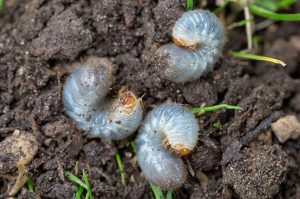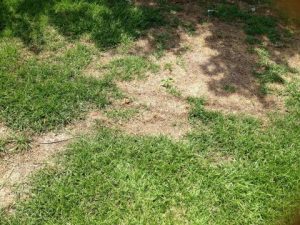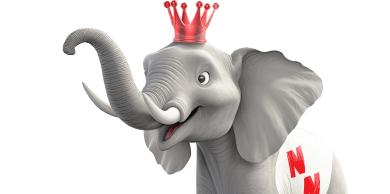Ah, one of the simple joys of homeownership—enjoying a beautiful green lawn. But oh no, brown patches… could something sinister be lurking under the surface? Let’s learn all about one of the most common lawn destroyers: lawn grubs!
What are Lawn Grubs?
Grubs are not a specific kind of bug, they are actually the larval stage (baby version) of beetles. In South Florida, the most common species are the southern masked chafer and May/June beetles. Adult beetles lay their eggs in the soil during the summer months, and by late summer and fall the grubs start to hatch and feed on your grass.
Appearance: Lawn grubs are typically white or cream-colored (similar to maggots) with a brown head and six tiny legs. Their body is often in a curled “C” shape and they’re about one inch long.
Conditions: Grubs thrive in warm and humid conditions, Florida’s natural climate. Overwatering your lawn can worsen the problem by attracting even more beetles.
Damage: The feeding grubs can cause root damage, lawn thinning, and brown patches. They can also attract animals to your yard which can cause further damage, and make your lawn more susceptible to weeds and diseases.

How do I know if my lawn has grubs?
Here are some signs that grubs may be to blame for lawn health problems.
- Patches of dead or dying grass: Grubs feed on the grass roots, causing the grass to turn brown and die. The patches may be small and scattered across the lawn and could grow larger over time.
- Grass feels spongy: If your grass feels spongy or bouncy as you walk on it, this could be a sign that grubs are damaging the roots.
- Increased wildlife activity: If you notice animals like birds, skunks, or raccoons digging and pecking around your yard, that’s a good sign they’re hunting for grubs.
- Seeing beetles nearby: If you see adult beetles on leaves of trees or shrubs nearby, they could be breeding and leaving eggs in your yard.

How to test for and treat grubs?
If you’re suspicious of grubs invading your lawn, here are some steps for checking if there’s an infestation.
- Test in August or September when grubs are most active and near the surface.
- Use a spade to cut square-foot sections of grass, about 2-4 inches deep. Test a few different areas of your lawn.
- Pull back the square foot of grass to expose the soil below and inspect for grubs.
- If you see 5 grubs or less this is a normal, healthy amount. Any more and you should call a pest control professional.
- Replace the patches and water.
How to treat lawn grubs?
Special lawn grub insecticides can be used to control grubs. However, it’s always a good idea to get an inspection or treatment from a pest control professional so they can use professional-grade products and the proper application techniques.
How to repair a damaged lawn?
After the grubs are treated, you’ll want to remove the dead grass and thatch (layer of dead grass stems, roots, and other plant material), loosen the soil with a garden fork or tiller, mix in topsoil or compost, and reseed the damaged areas. Make sure to water and fertilize regularly to ensure healthy grass growth.
Did you know Nozzle Nolen has lawn care services too?
You probably know Nozzle Nolen for our pest control services, but did you know we do lawn care too? By combining lawn care with pest control, we can eliminate and prevent lawn pests like grubs from damaging your yard, and keep it looking beautiful year-round. Learn about our lawn care packages.




